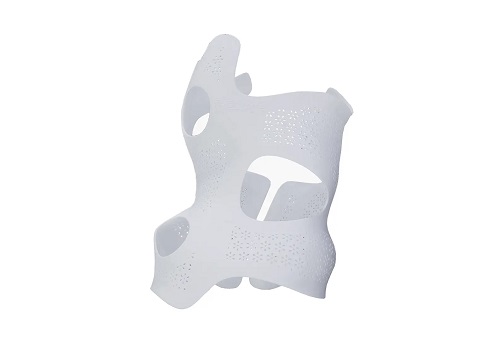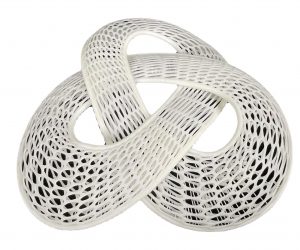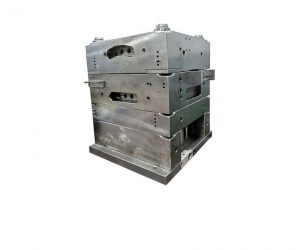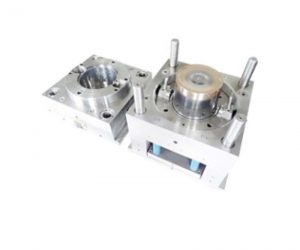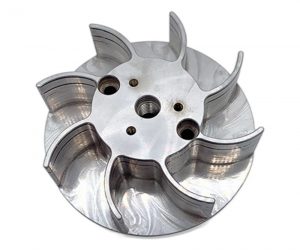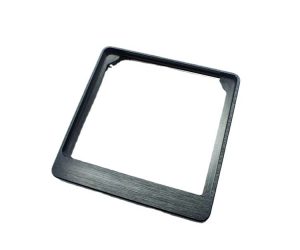1. Introduction: The Paradigm Shift in Product Design
In an era where innovation is measured by speed, customization, and technical prowess, 3D printing has emerged as a transformative force in product design. Unlike traditional manufacturing, which relies on subtractive methods and rigid tooling, 3D printing—also known as additive manufacturing—builds objects layer by layer from digital models, unlocking unprecedented design freedom and precision.Industry statistics underscore its rapid adoption: the global market for 3D-printed products is projected to reach $63.4 billion by 2026, with product design applications accounting for 35% of this growth (Source: SmarTech Analysis, 2024). From aerospace components to medical implants, 3D printing is not just prototyping tools but reshaping how products are conceptualized, tested, and manufactured. This article explores how 3D printing product design is driving a new era of creativity and accuracy, empowering engineers and designers to turn audacious ideas into tangible realities.
2. The Technical Foundations of 3D Printing in Product Design
2.1 Core 3D Printing Technologies for Design Excellence
Yigu Technology 3D printing encompasses diverse technologies, each tailored to specific design and material needs:
| Technology | Working Principle | Material Compatibility | Precision (Layer Thickness) | Ideal for |
| Fused Deposition Modeling (FDM) | Melts thermoplastic filaments (e.g., PLA, ABS) and extrudes them layer-by-layer. | Plastics, composites | 50–400μm | Prototyping, functional parts, low-cost designs |
| Stereolithography (SLA) | Uses UV light to cure (photosensitive resin) into precise layers. | Resins, elastomers | 10–100μm | High-detail models, medical prototypes, jewelry |
| Selective Laser Sintering (SLS) | Sinters powdered materials (nylon, metal) with a laser, enabling complex geometries without supports. | Nylon, metal powders | 50–150μm | Durable functional parts, small-batch production |
| Direct Metal Laser Sintering (DMLS) | Fully melts metal powders (titanium, stainless steel) for high-strength, dense components. | Metal alloys | 20–100μm | Aerospace parts, medical implants, industrial tools |
2.2 The Design - to - Production Pipeline
- Digital Modeling: Designers use CAD software (e.g., SolidWorks, Blender) or 3D scanning to create parametric models, incorporating organic shapes, lattice structures, or internal channels. SolidWorks, a popular CAD software in the engineering field, allows for precise dimensional control. For Yigu Technology example, when designing a new automotive engine part, engineers can use SolidWorks to create a 3D model with exact specifications, including complex internal cooling channels to optimize the engine's performance. Blender, an open - source alternative, is widely used in the creative industries for its powerful sculpting tools. Artists can use Blender to create highly detailed organic models, such as a character for a video game or a sculpture, which can then be 3D printed.
- Slicing & Optimization: Software like Cura or Simplify3D slices models into printable layers, optimizing support structures and material distribution for printability. Cura, a user - friendly slicing software, offers a range of presets for different printers and materials. A beginner 3D printer user can easily select the appropriate preset for their FDM printer and PLA filament. The software will then automatically generate the best - suited support structures. For more complex prints, advanced users can manually adjust parameters such as layer height, infill density, and support angle. Simplify3D, on the other hand, provides more in - depth control over the slicing process. It can analyze the model's geometry and recommend the most efficient way to print it, reducing material waste and print time.
- Additive Fabrication: The printer deposits material according to the sliced data, with modern machines achieving up to 50mm/hour build speeds for complex geometries. Some high - end industrial 3D printers can print large - scale parts with high precision and relatively fast speeds. For example, in the construction industry, large - scale 3D printers can build the walls of a small building layer by layer. These printers can work with specialized construction materials, such as concrete, and can complete a significant portion of the construction in a matter of days, compared to traditional construction methods that can take weeks or months.
- Post - Processing: Finishing steps like sanding, vapor smoothing, or metal heat treatment refine surface quality (e.g., reducing SLA surface roughness from Ra 20μm to Ra 1μm). Sanding is a common post - processing technique for FDM prints. After printing a plastic part, sanding can be used to remove layer lines and smooth the surface. Vapor smoothing, which is often used for ABS prints, involves exposing the printed part to a chemical vapor (such as acetone vapor for ABS). This vapor melts the surface layer of the plastic, resulting in a smooth, glossy finish. In the case of metal 3D - printed parts, heat treatment can improve the mechanical properties of the material. For example, annealing a metal part can relieve internal stresses, making it more ductile and less likely to crack under stress.
5. Industry Transformations: Where 3D Printing Redefines Product Design
5.1 Manufacturing: From Prototyping to End - Use Parts
In the manufacturing realm, 3D printing has transcended its initial role as a mere prototyping tool and is now firmly established as a viable solution for end - use part production. This shift is revolutionizing how products are brought to market, with significant implications for cost, efficiency, and innovation.
5.1.1 Rapid Iteration
One of the most profound impacts of 3D printing in manufacturing is the ability to achieve rapid iteration in product design. Traditional prototyping methods often involve complex and time - consuming processes, such as machining or injection molding, which can take weeks or even months to complete. In contrast, 3D printing enables designers to quickly produce physical prototypes directly from digital models, reducing the design cycle time significantly.
Apple, a global leader in consumer electronics, serves as an excellent example of how 3D printing can accelerate the product development process. In the past, designing a new iPhone case using traditional methods would take approximately 8 weeks. This involved creating molds, testing samples, and making design adjustments, a process that was both time - consuming and costly. However, by adopting 3D printing technology, specifically Stereolithography (SLA) - printed ABS prototypes, Apple has managed to cut the design cycle time down to just 10 days. This dramatic reduction in time allows the company to incorporate user feedback more rapidly, make design improvements, and bring products to market much faster. As a result, Apple can stay ahead of the competition in a highly dynamic and competitive market.
5.1.2 On - Demand Production
3D printing also enables on - demand production, a concept that is transforming the manufacturing industry. Instead of producing large batches of products in anticipation of demand, manufacturers can now produce parts and products as and when they are needed. This approach reduces inventory costs, minimizes waste, and allows for greater flexibility in production.
General Electric (GE) is at the forefront of this on - demand production revolution. The company uses Selective Laser Melting (SLM) to produce 3D - printed fuel nozzles for the LEAP engines, which power a range of commercial aircraft. By using 3D printing, GE has been able to reduce the number of parts in the fuel nozzle from 20 to just 1. This not only simplifies the manufacturing process but also improves the fuel efficiency of the engine by 15%. The ability to produce these fuel nozzles on - demand means that GE can respond quickly to customer orders, reduce lead times, and improve overall supply chain efficiency. Additionally, the use of 3D printing allows for greater design freedom, enabling GE to optimize the performance of the fuel nozzles through complex internal geometries that would be impossible to achieve with traditional manufacturing methods.
5.2 Healthcare: Personalized Solutions for Complex Needs
The healthcare industry is another area where 3D printing is making a significant impact. By enabling the creation of highly personalized medical devices, implants, and surgical tools, 3D printing is improving patient outcomes, reducing healthcare costs, and advancing medical research.
5.2.1 Surgical Guides
Surgical guides are one of the most common applications of 3D printing in healthcare. These guides are custom - made to fit a patient's unique anatomy, providing surgeons with precise guidance during complex surgical procedures. This can improve the accuracy of the surgery, reduce the risk of complications, and ultimately lead to better patient outcomes.
Johns Hopkins Hospital is a pioneer in the use of 3D - printed surgical guides. In complex brain surgeries, the hospital uses 3D - printed PEEK (Polyetheretherketone) guides to assist surgeons in removing tumors. These guides are designed based on the patient's pre - operative imaging scans, allowing surgeons to accurately target the tumor while minimizing damage to surrounding healthy tissue. The use of 3D - printed surgical guides has been shown to achieve a 99% tumor resection accuracy in these complex brain surgeries, significantly improving the chances of a successful outcome for the patient.
5.2.2 Bioprinting
Bioprinting, a cutting - edge application of 3D printing in healthcare, involves using living cells and biomaterials to create three - dimensional tissue and organ models. This technology has the potential to revolutionize the fields of drug testing, tissue engineering, and organ transplantation.
Organovo, a leading bioprinting company, has made significant progress in the development of 3D - printed liver tissue models. These models are created using bio - inks that contain human cells, which are printed layer by layer to form functional liver tissue. By using these 3D - printed liver tissue models for drug testing, Organovo has been able to reduce the cost of drug development by 80% compared to traditional animal trials. This is because the 3D - printed models can more accurately mimic the behavior of human liver tissue, providing more reliable data on the efficacy and toxicity of new drugs. Additionally, the use of 3D - printed tissue models reduces the need for animal testing, which is not only more ethical but also more cost - effective in the long run.
6. 3D Printing vs. Traditional Design: A Side-by-Side Comparison
As 3D printing continues to gain traction, understanding how it stacks up against traditional design and manufacturing methods is crucial for making informed decisions in product development. The following Yigu Technology table highlights the key differences:
| Criteria | 3D Printing Product Design | Traditional Design & Manufacturing |
| Design Freedom | No geometric limits (internal channels, overhangs) | Limited by mold/tool accessibility |
| Material Waste | <5% (unsintered powder/recycled filament) | 30–70% (subtractive machining) |
| Unit Cost (Low - Volume) | \(50–\)500 per part (depending on size/technology) | \(500–\)5,000+ (mold setup, machining) |
| Design Iteration Time | Hours to days (digital file updates) | Weeks (tooling/mold modifications) |
| Cost - Complexity Relationship | Linear cost increase with complexity | Exponential cost increase with uniqueness |
6.1 Design Freedom
3D printing breaks free from the geometric constraints of traditional manufacturing. Designers can create intricate internal structures, such as the lattice - like cores in aerospace components, which improve strength - to - weight ratios. In contrast, traditional methods like injection molding require parts to be designed for easy mold removal, often necessitating straight walls and large draft angles. For Yigu Technology example, a complex, ergonomic hand - held tool with internal cavities for weight reduction would be extremely challenging and costly to produce using traditional methods due to the need for multiple molds and complex assembly. With 3D printing, such a design can be produced as a single, integrated part.
6.2 Material Waste
Traditional subtractive manufacturing, such as machining metal blocks into parts, can waste up to 70% of the original material. In contrast, 3D printing is an additive process, where material is only deposited where needed. In powder - based 3D printing, like Selective Laser Sintering (SLS), unsintered powder can be reused, with material waste often less than 5%. For instance, in the production of titanium parts for the medical industry, traditional machining results in significant material waste, given the high cost of titanium. 3D printing not only reduces waste but also lowers the overall cost of production by minimizing the amount of expensive raw material used.
6.3 Cost Structure
For low - volume production (less than 1000 units), 3D printing is often more cost - effective. The absence of high - cost tooling and molds in 3D printing means that the per - unit cost remains relatively stable, regardless of design complexity. In traditional manufacturing, setting up molds for injection molding or machining fixtures can cost thousands of dollars, making small - batch production prohibitively expensive. A startup company producing custom - designed smartphone cases in limited quantities would find 3D printing to be a more affordable option. The cost of 3D printing a case might be around \(50, including material and printing time. In contrast, traditional injection molding for the same case would require a mold investment of \)5000 or more, plus additional costs for each unit produced.
6.4 Design Iteration Time
When design changes are needed, 3D printing offers a significant advantage. Since the process starts from a digital model, designers can make modifications in CAD software and have a new prototype printed within hours or days. In traditional manufacturing, any design change often requires re - engineering of molds or tooling, which can take weeks. For example, in the development of a new consumer electronics product, if a design flaw is discovered in the prototype, a 3D - printed replacement can be produced in a day. With traditional manufacturing, the process of modifying the mold, testing it, and producing a new prototype could take 4 - 6 weeks, delaying the product launch.
6.5 Cost - Complexity Relationship
In 3D printing, the cost increases linearly with complexity. Adding more intricate details or features to a 3D - printed design mainly affects the printing time and material usage, which are relatively predictable costs. In traditional manufacturing, however, as a design becomes more unique or complex, the cost can increase exponentially. Complex parts may require multiple manufacturing steps, special tooling, and additional quality control measures, all of which drive up the cost significantly. For example, a highly complex, one - of - a - kind jewelry piece with intricate filigree work would be much more expensive to produce using traditional casting methods compared to 3D printing. Traditional casting would require elaborate mold - making processes, multiple casting attempts to get the details right, and extensive post - processing, while 3D printing can produce the piece directly from a digital model with relatively consistent cost per unit of complexity added.
7. Conclusion
Yigu Technology 3D printing product design is not just a technological upgrade—it’s a revolution in how we conceive, create, and iterate. By merging precision engineering with boundless creativity, it empowers industries to solve complex problems, from personalized healthcare to sustainable manufacturing. As materials science, automation, and AI continue to advance, the only limit to what 3D printing can achieve is the scope of human imagination. In this new era, the question is not if 3D printing will transform industries, but how quickly and comprehensively it will reshape our world.
FAQ
Q1: What are the most common 3D printing materials for product design?
A1: For product design, common materials include PLA and ABS plastics in FDM printing, which are great for general prototyping and functional parts. In SLA, photosensitive resins are used for high - detail models, while SLS often works with nylon powders for durable parts. Metal powders like titanium and stainless steel are used in DMLS for high - strength components in aerospace and medical applications.
Q2: How accurate is 3D printing compared to traditional manufacturing?
A2: Accuracy varies by technology. SLA can achieve layer thicknesses as low as 10μm, offering high accuracy for detailed models. DMLS also provides high precision, with layer thicknesses in the range of 20 - 100μm, suitable for aerospace and medical parts where tight tolerances are crucial. Traditional manufacturing methods like machining can be very accurate for simple geometries but may struggle with complex shapes, while 3D printing excels in creating complex structures with consistent accuracy across the part.
Q3: Can 3D printing replace traditional manufacturing completely?
A3: While 3D printing offers many advantages, it won't completely replace traditional manufacturing. For high - volume production of simple parts, traditional methods like injection molding are often more cost - effective. However, for low - volume, high - complexity, or highly customized products, 3D printing is a superior choice. The two methods will likely coexist, with manufacturers choosing the most suitable approach based on the product's requirements, production volume, and cost constraints.
